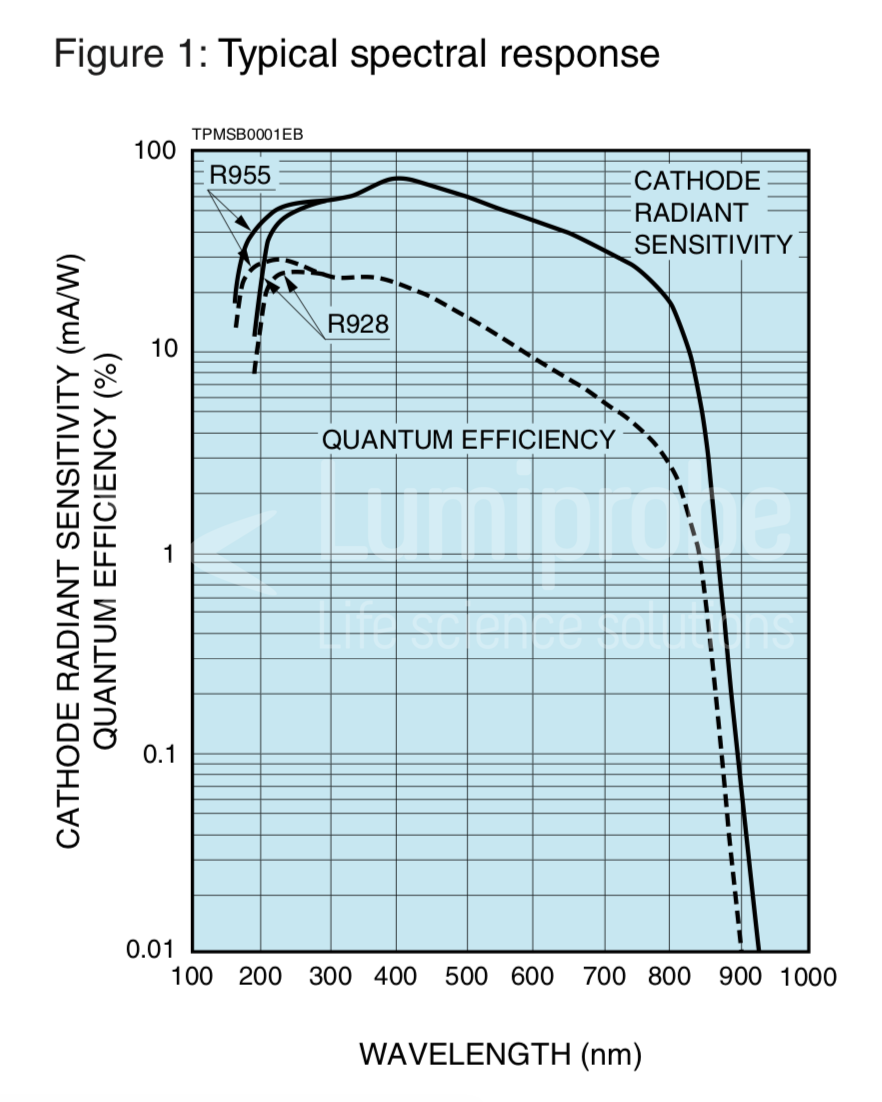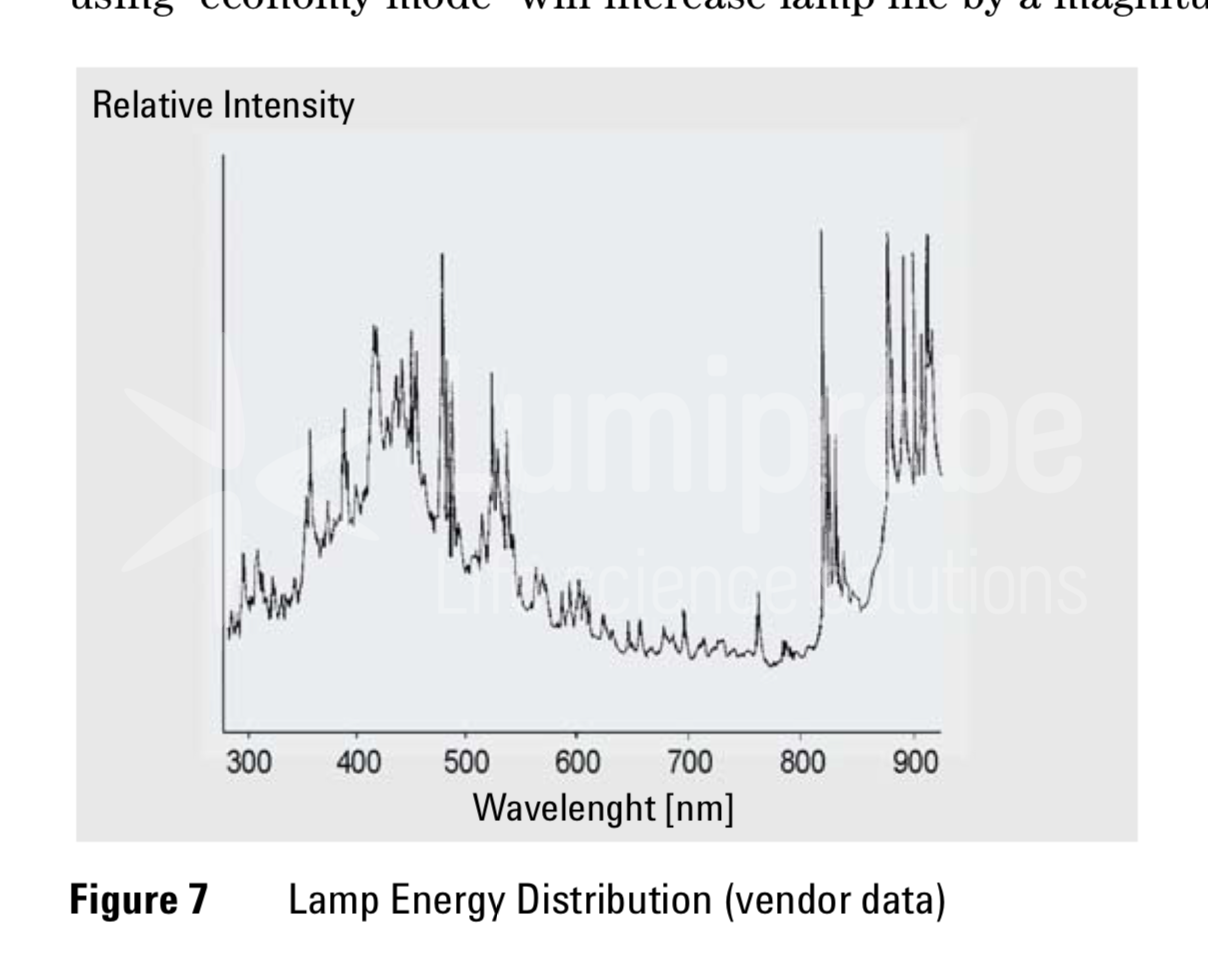Lower sensitivity in the NIR range is expected because excitation lamps often have lower emissions in the NIR range, and detectors are often orders of magnitude less sensitive in NIR.
According to the spectrum of the UV excitation lamp of Agilent FLD, you can see the low intensity in the NIR range corresponding to your excitation wavelength. Agilent does not provide a spectral sensitivity function for their detector in this document, but please find below a curve for R928 PMT, often used as a detector in cuvette fluorometers and well plate readers:
As you can see, it is about 1.5 orders of magnitude less sensitive at around 800 nm than at optimal wavelengths around 500 nm. NIR dyes have also somewhat lower quantum efficiencies than visible-range dyes. All these factors are multiplied to give a 100-1000 fold lower signal in NIR when detected using most conventional instrumentation.
Therefore, we recommend performing optimizations to improve sensitivity (use broader slits and perform spectral scans to ensure you are operating at maxima of excitation and emission spectra). Signal intensities for NIR dyes and visible range dyes are not directly comparable.


